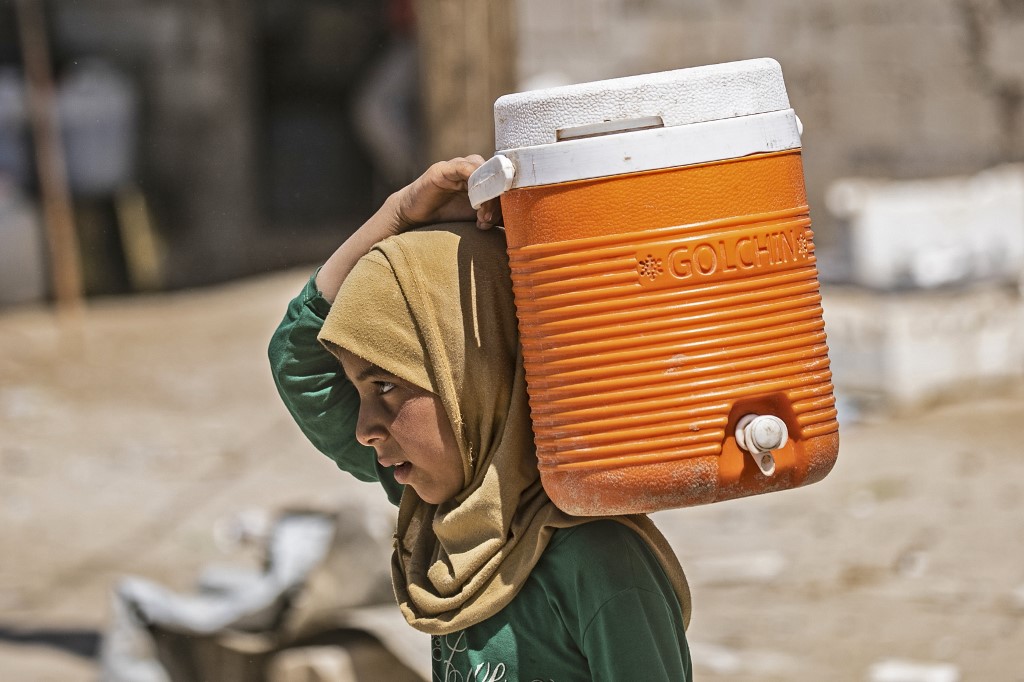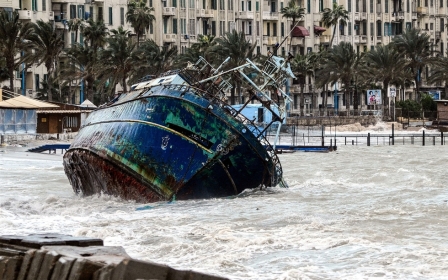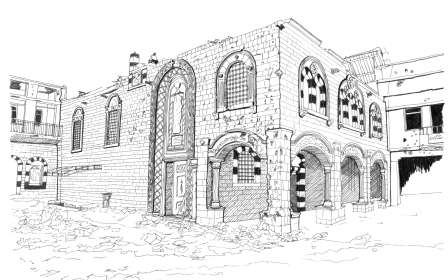Syria's agriculture must be at the centre of any economic revival after war

If – and it’s a very big if – peace does eventually come to Syria, one of the first tasks will be rebuilding the country’s agricultural sector. It will be a project of vast proportions.
War has devastated much of what was once one of the most productive agricultural systems in the Middle East. Irrigation systems and water pumping stations have been wrecked, grain silos have been destroyed and once-fertile farmlands have been abandoned because of the fighting.
On top of the destruction caused by war, Syria is suffering the effects of climate change: over the past two years, a severe drought has greatly reduced cereal production.
Disappearing trade
A team of researchers from the UN’s Food and Agriculture Organization (FAO) and the World Food Programme (WFP) recently visited Syria and, after conducting surveys of thousands of households and talking with officials, produced a lengthy report on the state of the country’s agriculture.
The study makes for grim reading. Not so long ago, Syria was self-sufficient in most foodstuffs and one of the biggest exporters of agricultural products in the Middle East. Sheep, cattle and poultry meat, together with cotton, potatoes, tomatoes, sugar, olive oil, apples and oranges were transported abroad. The Gulf states were a particularly big market for Syrian produce.
A country that was one of the breadbaskets of the region has become largely dependent on grain imports, mostly from Russia
The bulk of that trade has now gone. A country that was one of the breadbaskets of the region has become largely dependent on grain imports, mostly from Russia. The FAO/WFP report estimates that 5.5 million Syrians – nearly a third of the present population – are now “food insecure” and in need of some form of food assistance in order to survive.
The report also says that while there has been some easing of price rises over the past two years, an average basket of foodstuffs is still seven times more expensive than in 2011.
Water mismanagement
Bread is central to the Syrian diet. Pre-2011 and the outbreak of conflict, Syria’s wheat production averaged more than four million tonnes a year. War and the destruction of infrastructure, together with an extended drought, resulted in a wheat crop last year of only 1.2 million tonnes – the lowest level for nearly 30 years. With seeds in short supply, the outlook is grim for this year’s crop.
One of the most critical tasks in any rebuilding process is tackling the issue of water. A common narrative is that climate change was a leading cause of events leading to the upheaval of 2011, with farmers forced off their land by a prolonged period without rain, joining urban-based protests.
But while drought and high temperatures exacerbated tensions, years of water mismanagement by authorities in Damascus was a key element driving rural unrest. Through his long term in power, Syrian strongman Hafez al-Assad encouraged the widespread planting of water-hungry crops such as cotton. The result was a severe depletion of water resources, with nearly 90 percent of the country’s available water used up by agriculture.
In contrast, Hafez’s son, Bashar, presented himself as a moderniser when he came to power in 2000, encouraging high-tech and commercial enterprises rather than agricultural development. Water projects were abandoned; fuel subsidies given to farmers for pumping up water were withdrawn; mass migration to the cities followed, and the protests grew.
If Syria is to move once again towards achieving food self-sufficiency, a wholesale revamp of the country’s water system will have to be undertaken. Billions of dollars are needed for rehabilitating dams, pumping stations and irrigation systems.
Hopeful signs
Post-conflict planners face another major problem. Syria is heavily dependent on river waters from adjoining states, particularly Turkey. The Euphrates, which rises in Turkey, is a vital source of water for a large part of the country.
Now, due to changes in climate and an extensive dam building programme in recent years over the border in eastern Turkey, the flow of the Euphrates through Syria has been severely depleted. Damascus will have to negotiate a water-sharing agreement with Ankara.
Yet, despite all the problems, there are some hopeful signs.
“The resilience of the agriculture sector is an astonishing story,” noted Daniel Gustafson, deputy director general of the FAO, according to a report by the Associated Press.
Once the fighting has finished, he said, international aid efforts must focus on the agricultural sector in order to kick-start recovery in other areas. A big problem is a lack of fertiliser and seeds: “You cannot get seeds, you cannot sell stuff, you cannot trade, you cannot get spare parts,” Gustafson said. “The whole thing just kind of grinds down.”
But farmers still labour away. Livestock numbers appear to be stabilising, while the road distribution network – vital for transporting produce to markets in towns and cities – is being repaired in some areas.
The path forward
The FAO/WFP report cited “an increase in agricultural activities in 2018 compared to the previous year, mainly due to increased security in many parts of the country, re-opening of roads and greater market access.”
Sanctions on Syrian exports and imports imposed by many countries are a further handicap to the rebirth of the agricultural sector
The study also said people were returning to many areas, including lands around Aleppo, Homs and Hama. Some border posts are reopening, although agricultural exports are constrained by the breakdown of central government controls and regulations on many products.
Amid the war, government regulatory structures on many agricultural products have collapsed, making life difficult for exporters.
Sanctions on Syrian exports and imports imposed by many countries are a further handicap to the rebirth of the agricultural sector. Before the conflict, Syrian agriculture was highly mechanised. Now, farmers are unable to buy spare parts for their tractors.
Anger and frustration among farmers was a main contributing factor leading to the upheaval that has devastated Syria and its people over the last eight years. A revival in farmers’ fortunes is key to the country’s future.
The views expressed in this article belong to the author and do not necessarily reflect the editorial policy of Middle East Eye.
This article is available in French on Middle East Eye French edition.
Middle East Eye propose une couverture et une analyse indépendantes et incomparables du Moyen-Orient, de l’Afrique du Nord et d’autres régions du monde. Pour en savoir plus sur la reprise de ce contenu et les frais qui s’appliquent, veuillez remplir ce formulaire [en anglais]. Pour en savoir plus sur MEE, cliquez ici [en anglais].







